Recommended vibration monitoring system for centrifugal compressors
Our SIL 2 safety monitoring solutions are easily adapted to your type of centrifugal compressor. Below are the solutions we recommend for compressors with sleeve bearings, thrust bearings, roller bearings, or magnetic bearings, respectively.
All solutions can be delivered for factory fitting (for OEMs) or retrofitting (for machine owners or service providers), depending on your needs.
 The PCH 1420 Vibration Monitor for centrifugal compressors
The PCH 1420 Vibration Monitor for centrifugal compressors
Each monitoring solution for centrifugal compressors is based on the PCH 1420 Vibration Monitor, a versatile, four-channel safety monitor, which can be configured for proximity probes and accelerometers as needed. It measures the dynamic vibrations as well as the GAP distance to target and is SIL 2 rated.
Features of the PCH 1420 Vibration Monitor
- Frequency range: adjustable, 0.7 Hz to 11.5 kHz
- Measuring range: adjustable (default 0-20 mm/s, 0-100 m/s², or 0-100 μm)
- Signal detection: RMS, Peak, Peak to Peak
- Measuring parameter: velocity (mm/s), displacement (μm/mm), or acceleration (m/s²)
- Inputs: RPM via PNP/NPN sensor or 4-20 mA input
- Outputs: 4 analogue outputs (0/4-20 mA or 0/2-10 V) or 4 digital outputs, 1 alarm relay
- Communication: RS-485, USB, IoT-ready, PCH Cloud
- Compliance: SIL 2, IEC 61508, PL-d, IP 20
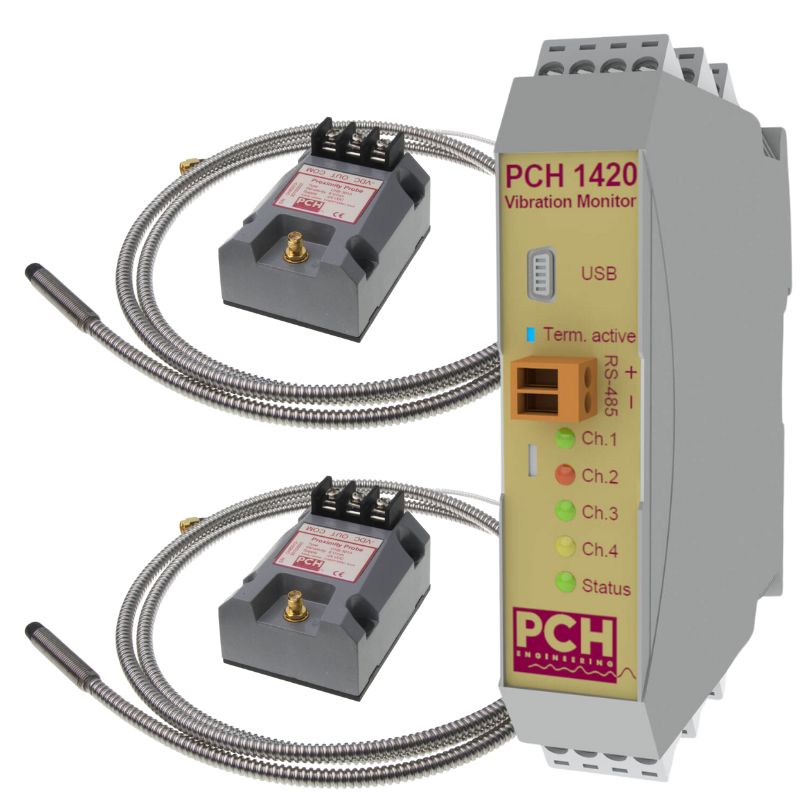 Monitoring system for compressors with sleeve bearings
Monitoring system for compressors with sleeve bearings
Proximity probes are mounted on the inlet and outlet sleeve bearings (or journal bearings) and the PCH 1420 Proximity Monitor transmits the vibration data to your PLC or SCADA system through its USB/RS485 communication port.
- PCH 1420 Vibration Monitor for proximity probes
- 2-4 proximity probes
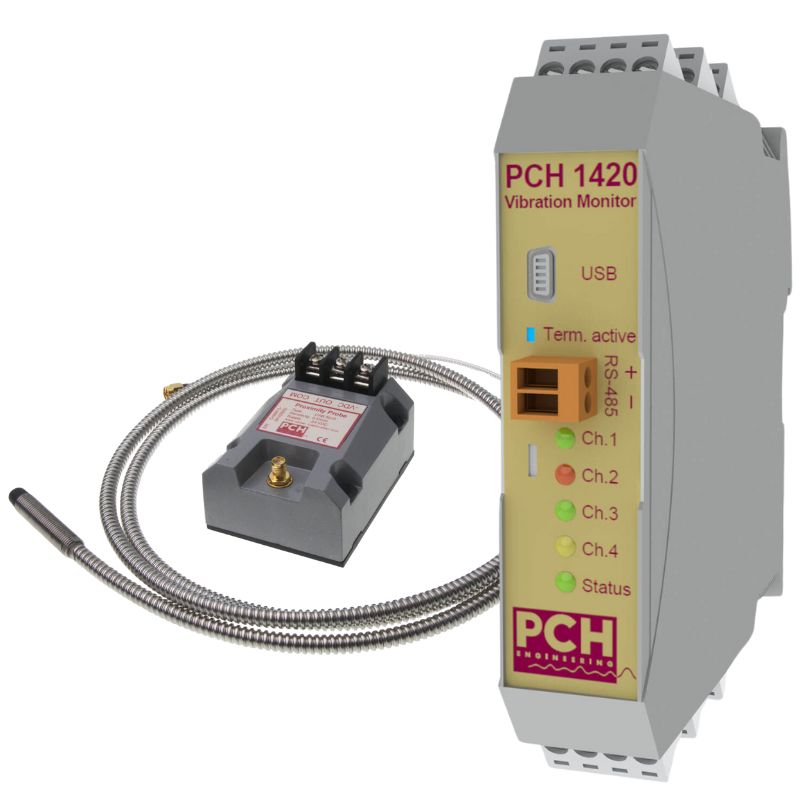 Monitoring system for compressors with thrust bearings
Monitoring system for compressors with thrust bearings
For centrifugal compressors with thrust bearings, we recommend a single proximity probe on the bearing housing.
- PCH 1420 Vibration Monitor for proximity probes
- 1 proximity probe
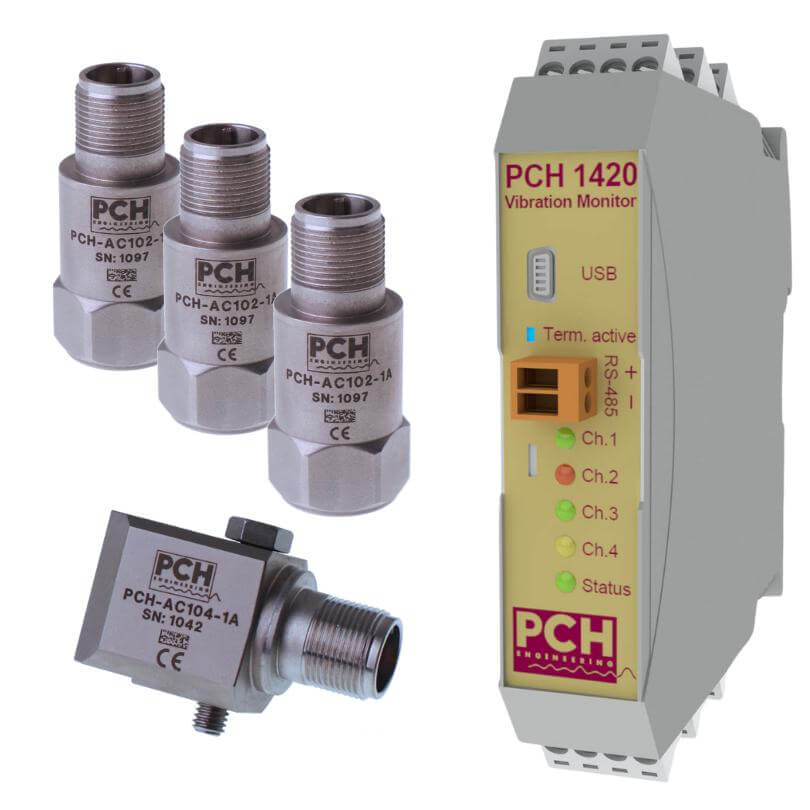 Monitoring system for compressors with roller bearings
Monitoring system for compressors with roller bearings
If your compressor has roller bearings, we recommend you use permanently mounted accelerometers as vibration sensors.
- PCH 1420 Vibration Monitor for accelerometers
- 2-4 accelerometers
 Monitoring system for compressors with magnetic bearings or film bearings
Monitoring system for compressors with magnetic bearings or film bearings
The benefit of magnetic bearings is the lack of friction, but they are vulnerable to shaft misalignment during surges, which may overload the control system. To mitigate that risk, we recommend you mount proximity probes to detect misalignment and control the magnetic bearings.
- PCH 1420 Vibration Monitor for proximity probes
- 2-4 proximity probes
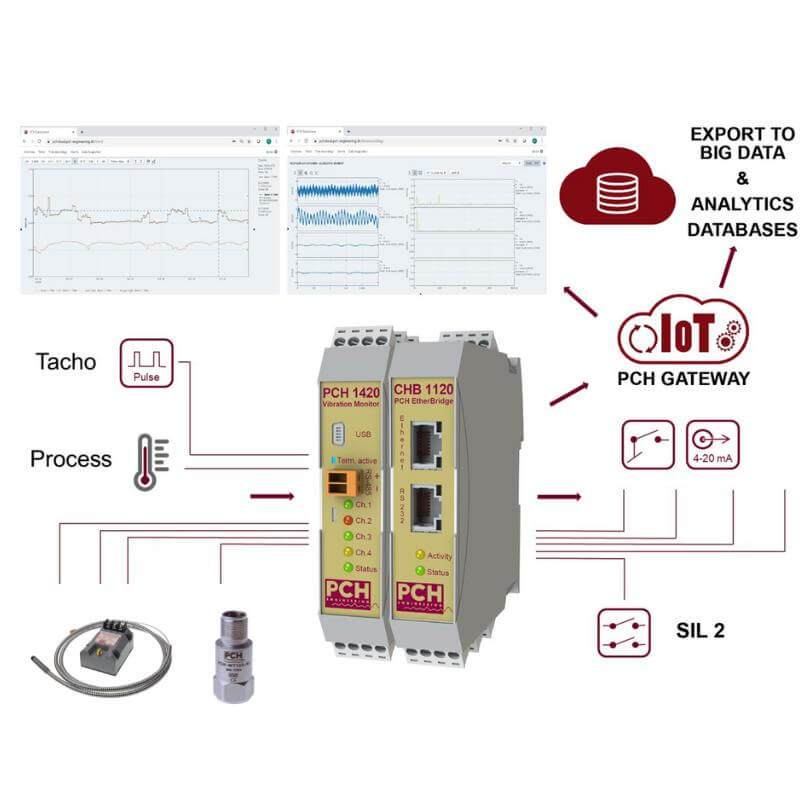 Remote compressor monitoring system
Remote compressor monitoring system
Adding the PCH EtherBridge gateway to your compressor monitoring solution enables you to store data on an edge computer or in the cloud for remote monitoring and vibration analysis.
- PCH 1420 Vibration Monitor for proximity probe
- Proximity probes or accelerometers
- PCH EtherBridge IoT
See how compressor-startup Green-y uses PCH monitoring kits for R&D data acquisition
Swiss startup Green-Y has developed a highly efficient oil-free compressor, and PCH Engineering’s monitoring equipment is being used for acquiring in-depth data in the R&D stages. Learn more about the solution and R&D benefits.
Contact us to find the right solution for your centrifugal compressor
Contact
a consultant
Why monitor vibrations in centrifugal compressors?
Low vibration is inherent in centrifugal compressors. Excessive vibration, however, is typically an indicator of emerging faults such as surges, bearing wear, misalignment etc., and monitoring compressor vibration enables you to:
- maintain safe, efficient operation of the compressor
- schedule compressor maintenance
- minimize unplanned downtime
- avoid catastrophic failure.
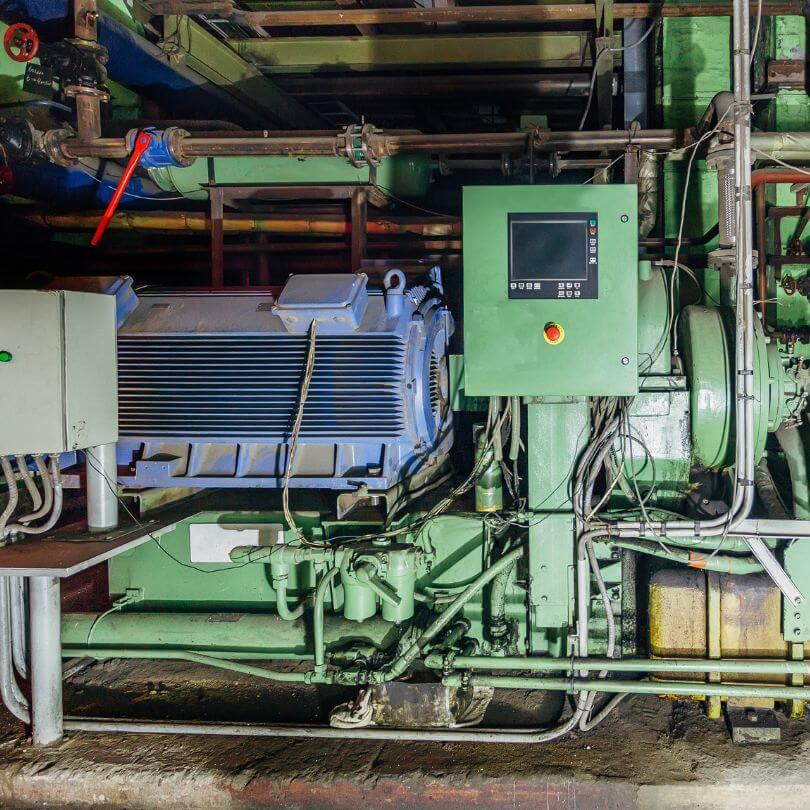 How to measure compressor vibrations
How to measure compressor vibrations
Proximity probes – or accelerometers for compressors with roller bearings – are mounted on the bearings. The number of vibration sensors and their mounting is determined by the type of bearings of the compressor. Please refer to the specific solutions described above.
Vibration limits for centrifugal compressors
Each centrifugal compressor has its own vibration profile. Typically, the highest amplitude of a centrifugal compressor’s vibration spectrum occurs at 1X running speed, with smaller amplitudes occurring at multiples of 1X. Measure vibration during normal operation to set a baseline for your compressor and monitor vibration continuously to detect any vibration outside the normal pattern.
Contact us to learn more about continuous compressor monitoring.
Most common causes of centrifugal compressor vibration
- Surge
- Unbalance
- Looseness
- Misalignment
- Bearing wear and overload
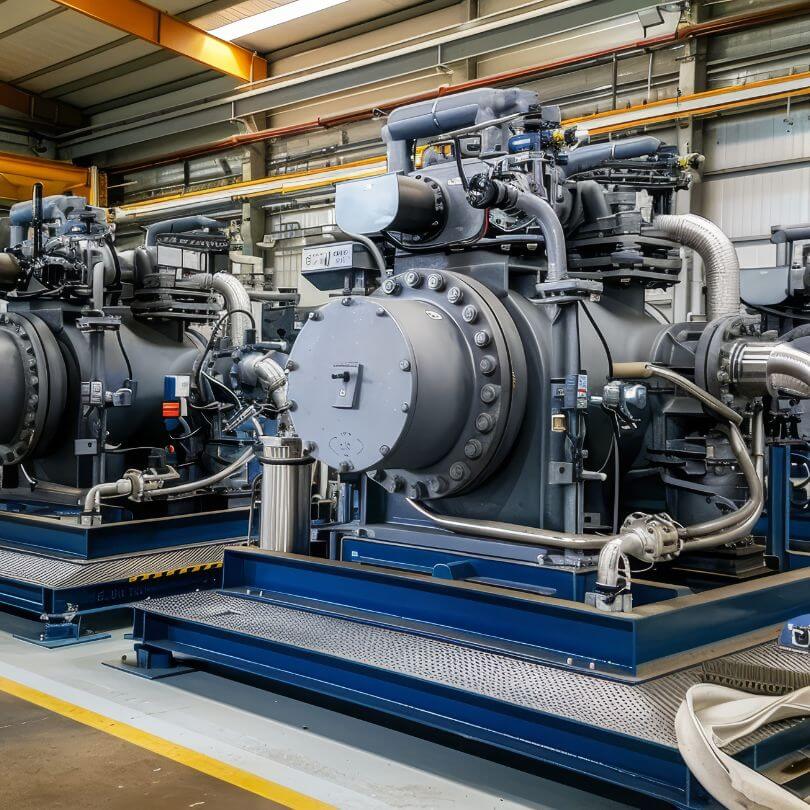 Surge in centrifugal compressors
Surge in centrifugal compressors
A surge occurs when the centrifugal compressor’s backpressure is too great, and the flow of the gas momentarily reverses or recirculates inside the compressor, increasing the temperature of the gas.
Surging causes violent changes of thrust and excessive vibration and oscillation. This can damage the internal parts of the compressor, and the rise in temperature can affect the lubricant and cause friction. If left unchecked, surge may result in catastrophic failure.
A surge is indicated in the radial vibration signal as subsynchronous frequencies below running speed.
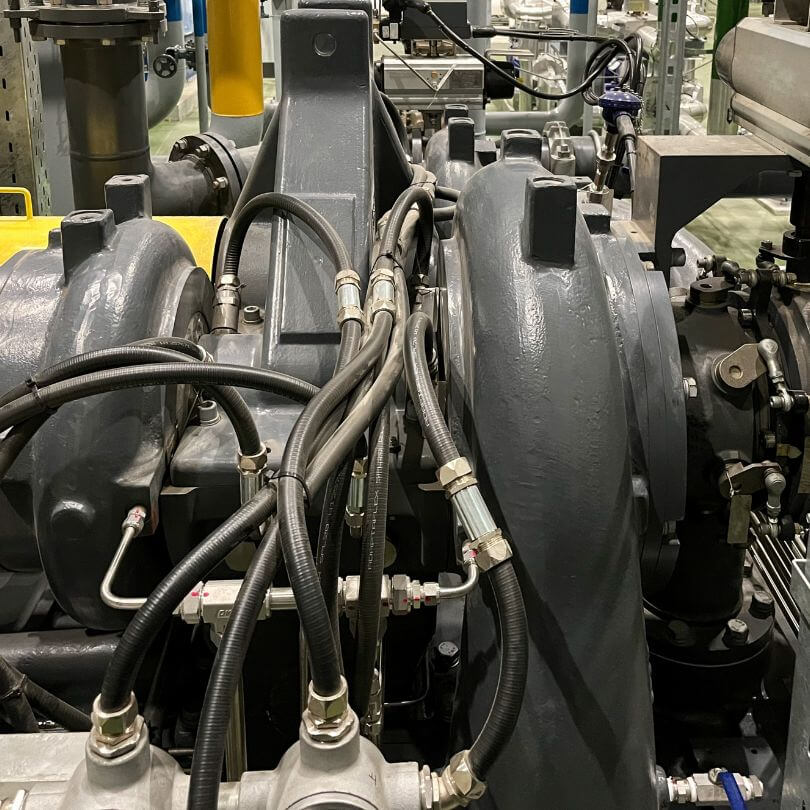
Unbalance
Mass unbalance is when the geometric center and the mass center of a rotor are not aligned. This can be caused by various factors and causes friction and excessive bearing wear.
Looseness
Loose mounting is a common cause of vibration in centrifugal compressors.
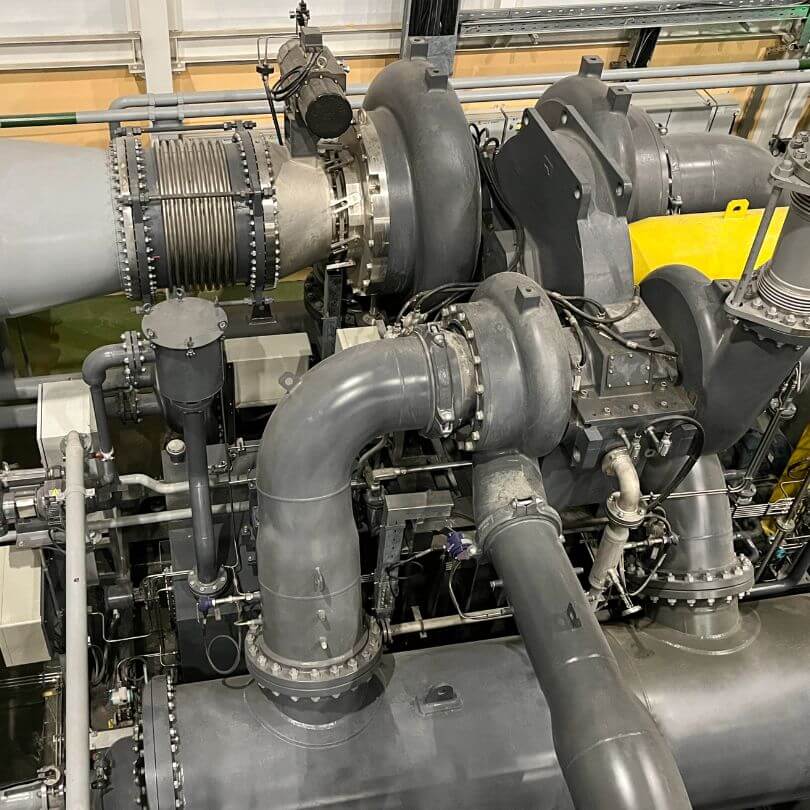 Misalignment
Misalignment
Misalignment of the compressor bearings can cause bearing wear, bearing overload and premature bearing failure.
Bearing wear and overload
The violent changes of thrust caused by surges may bring the stationary and rotating parts of the compressor into contact with each other. It can cause thrust or radial bearing overload and bearing failure as well as seal rubbing.
Contact us to find a vibration monitoring solution to protect your centrifugal compressor from the most common issues
Contact
a consultant



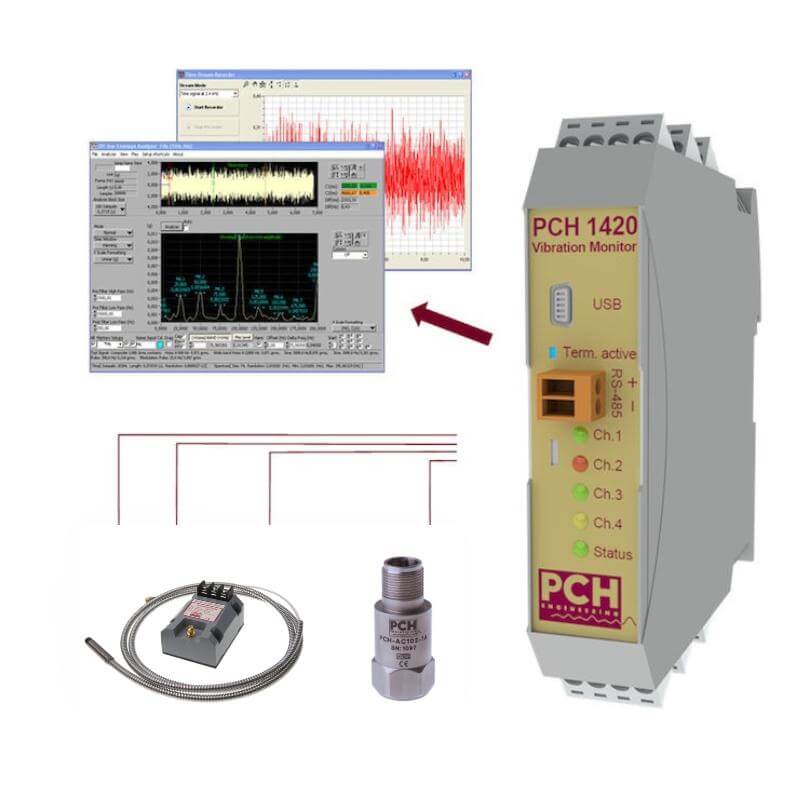
 The PCH 1420 Vibration Monitor for centrifugal compressors
The PCH 1420 Vibration Monitor for centrifugal compressors Monitoring system for compressors with sleeve bearings
Monitoring system for compressors with sleeve bearings Monitoring system for compressors with thrust bearings
Monitoring system for compressors with thrust bearings Monitoring system for compressors with roller bearings
Monitoring system for compressors with roller bearings
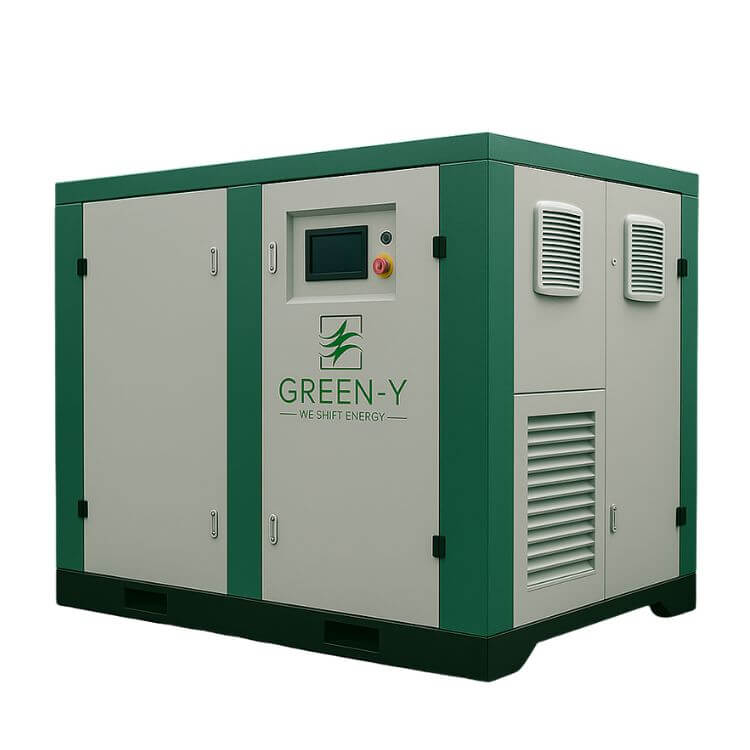

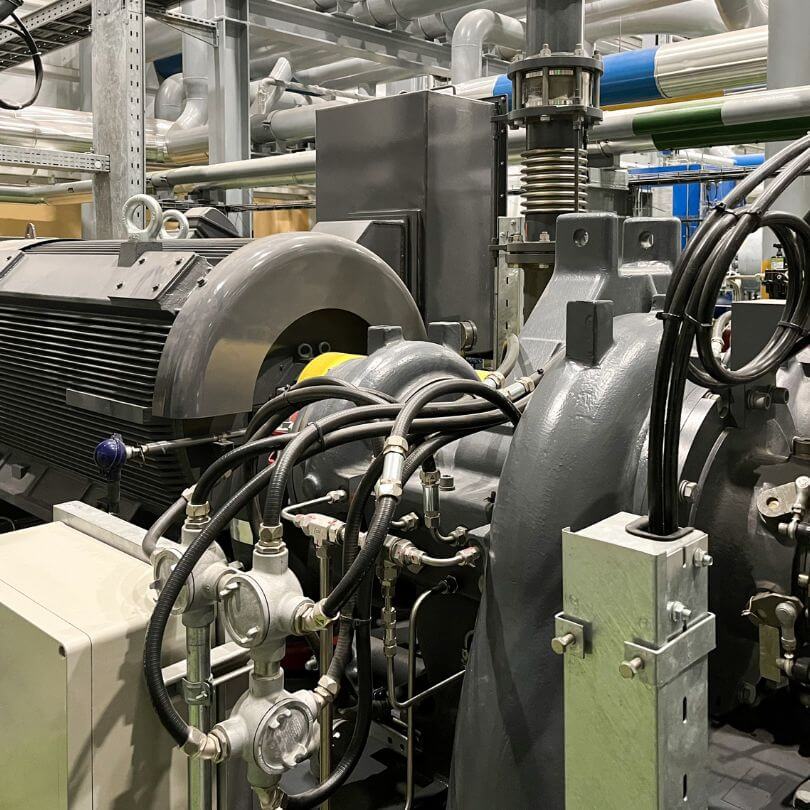
 How to measure compressor vibrations
How to measure compressor vibrations
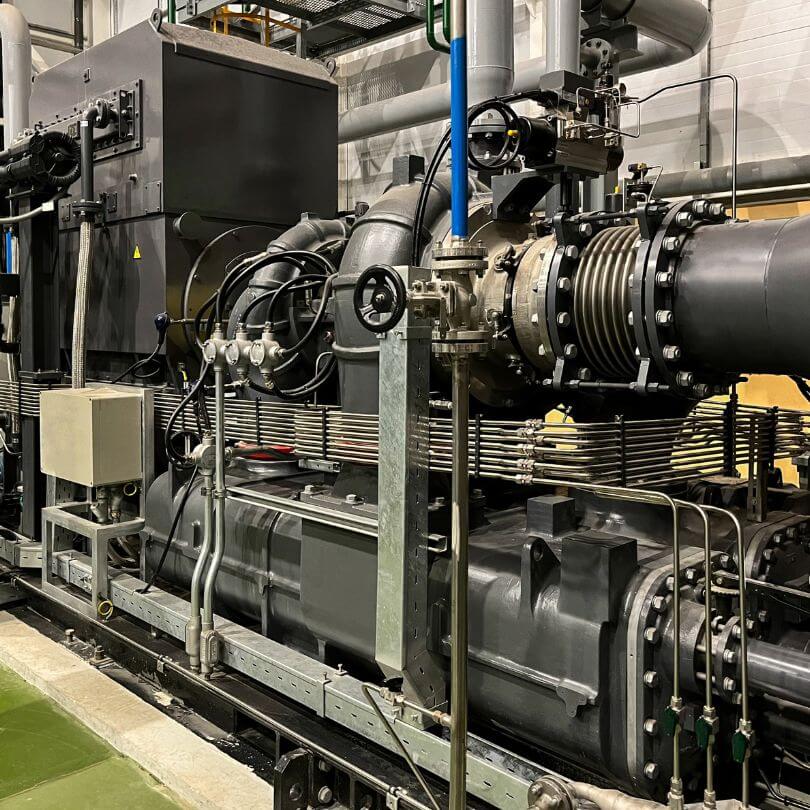
 Surge in centrifugal compressors
Surge in centrifugal compressors
 Misalignment
Misalignment